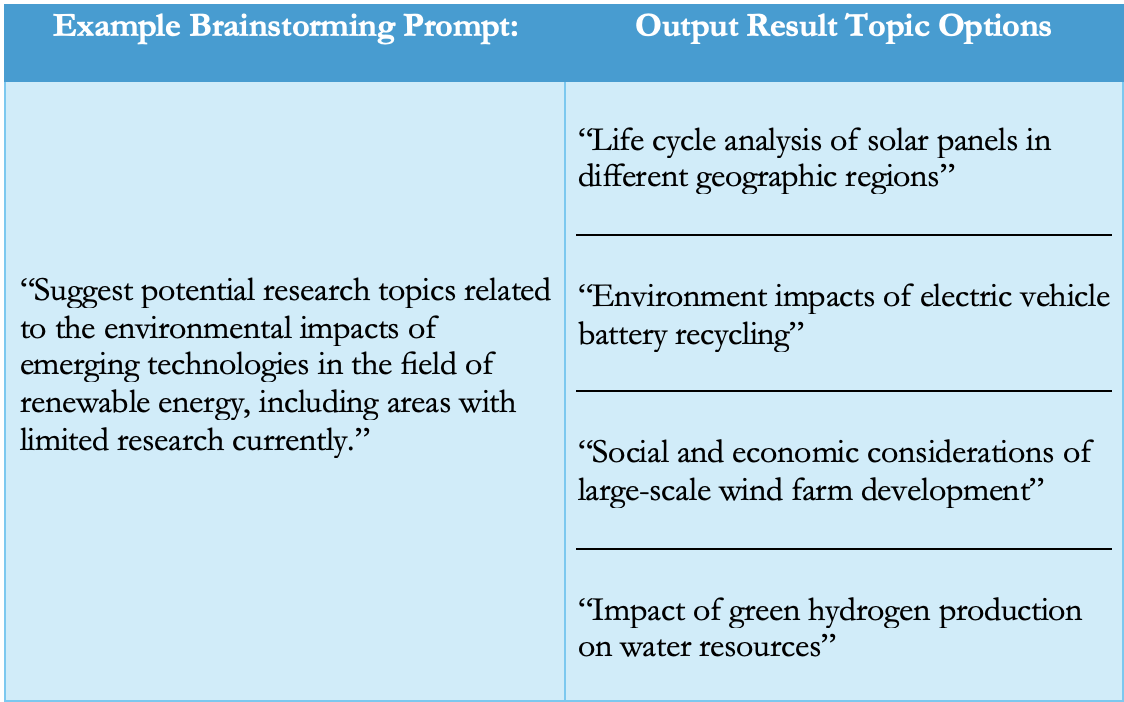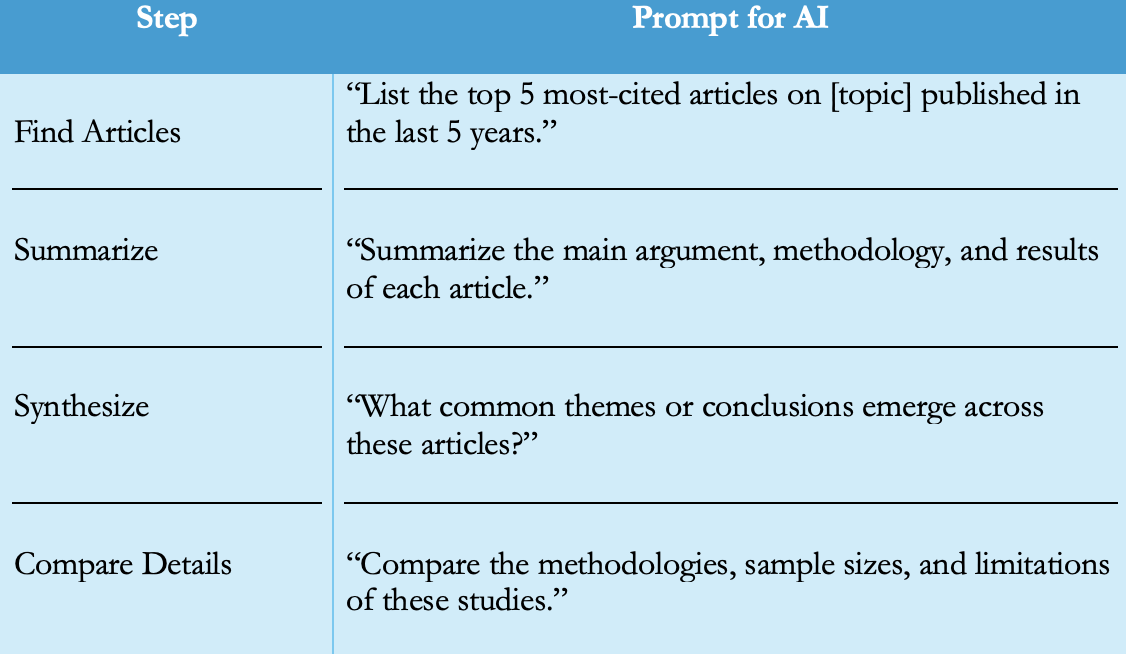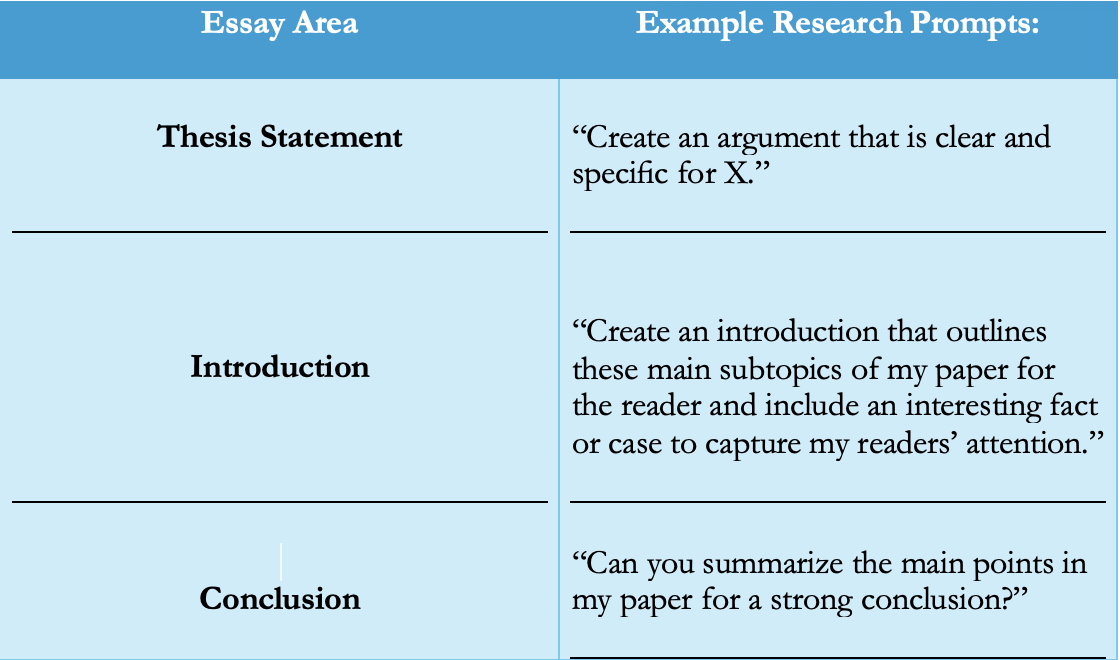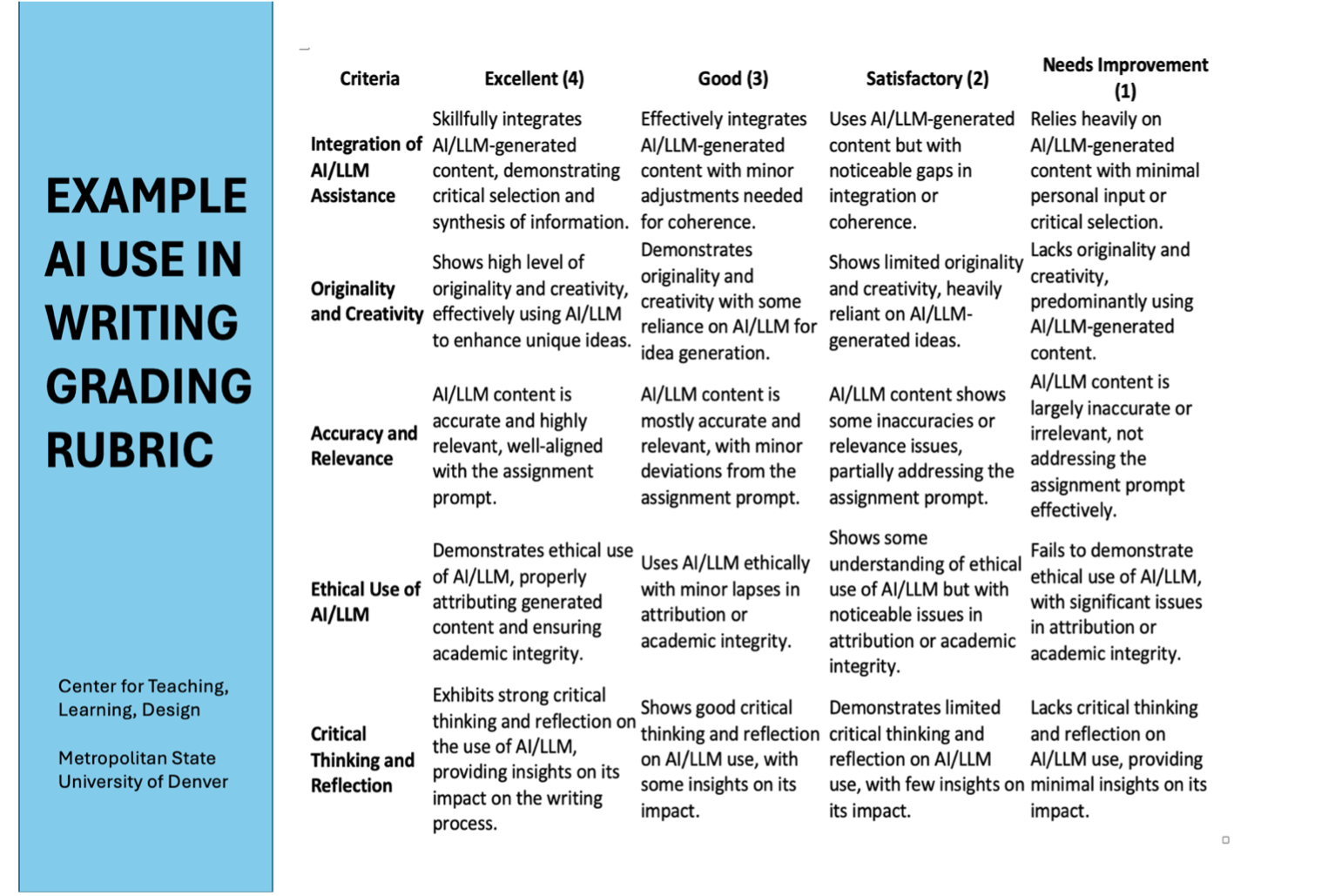Incorporating Generative AI Into the Writing Process For Students
The introduction of generative AI tools like ChatGPT, Claude, or Copilot have brought both opportunities and challenges to core practices in teaching and learning, particularly around writing. As instructors and students alike navigate this rapidly evolving landscape, institutions are increasingly being called upon to provide support, guidance, and space for experimentation.
At MSU, instructors are encouraged to make informed decisions about how—and to what extent—they integrate generative AI into their courses. Many faculty members remain understandably cautious, especially when it comes to writing instruction, while others have found meaningful ways to incorporate AI into classroom discussions, assignments, and critical thinking exercises.
When approaching writing instruction in the age of generative AI, it can be helpful to start with a process-based mindset. A number of educators and writing programs now offer frameworks for integrating AI at different stages of the writing process—from brainstorming and research to outlining to revision—in ways that enhance student learning rather than replace it. The goal is to have students practice their writing skills by prompting AI with the proper questions and/or tasks that support effective writing. For example, asking students to evaluate or revise AI-generated content can be a powerful way to sharpen their analytical and writing skills. These resources emphasize the importance of transparency, authorship, integrity, and critical engagement.
As we continue to adapt to this new era of writing and learning, our goal is to provide practical, ethical, and pedagogically sound approaches to using generative AI in higher education.
Click a link below to read more about:
- Using AI with Intention and Integrity
- Activity 1: Brainstorming
- Activity 2: Thesis Statements
- Activity 3: Research
- Activity 4: Organizing
- Activity 5: Providing Feedback
- Final Thoughts
- Additional Resources
Using AI with Intention and Integrity
As the new academic term begins, it’s important for both instructors and students to develop a foundational understanding of how large language models like ChatGPT work—regardless of whether generative AI is encouraged, discouraged, or restricted in your course.
If faculty decide to incorporate generative AI into their courses, we encourage them to support students in using it responsibly and thoughtfully. Doing so requires more than just technical access—it also calls for strong critical thinking, digital literacy, and writing skills. When used with intention and integrity, these tools can become opportunities for deeper engagement, analysis, and reflection in academic work.
Incorporating AI into the Writing Process
The writing process can be broken down into four main stages—Brainstorming, Research, Outlining/Drafting, and Revision/Editing. Below are some ideas to incorporate AI into the writing process keeping integrity and strong critical thinking skills in mind.
Activity 1: Brainstorming 
Overview:
Use AI to generate initial ideas based on a writing prompt.
- Students read assignment prompt and determine what needs to be addressed in the essay
- Students input a specific, focused brainstorming prompt into AI
- Students assess the given output results and determine which will support the strongest essay

Optional Debrief Discussion:
- Which ideas did you keep? Which did you reject?
- How valid and/or valuable were the suggestions AI offered?
- How did AI stretch or limit your thinking?
Learning Outcomes:
- generate multiple writing directions from a single prompt
- expand initial thinking with the help of, not reliance upon, AI
- identify and reflect on creative ownership in ideation
Activity 2: Thesis Statements 
Overview:
Evaluate and refine thesis statements using AI feedback
- Students draft a thesis statement without AI
- Prompt AI with: “Here is my thesis statement. How could I make this more precise, arguable, or complex?”
- Students compare original vs. AI-revised thesis and revise based on their intent and audience

Optional Debrief Discussion:
- Did AI make your thesis stronger or just longer?
- What aspects of the AI’s revision did you accept or reject? Why?
- How do you define a “good” these now, after this exercise?
Alternative AI Prompts:
- “Create an argument that is clear and specific for X”
- “Create an introduction that outlines these main subtopics of my paper for the reader and include an interesting fact or case to capture my readers attention”
- “Can you summarize the main points in my paper for a strong conclusion?”
Learning Outcomes:
- Evaluate thesis statements for clarity, specificity, and disputability
- Practice revising claims based on AI and self-assessment
- Understand how AI can help—but not replace—critical judgment
Activity 3: Research
Overview:
Use AI to identify the top 5 or most important or cited articles on chosen topic
- With or without AI (instructor’s choice), students find 5+ articles related to their topic
- Students upload article PDFs and ask AI to generate:
- Summaries
- Synthesis statements
- Comparison of methodologies, results, populations, and limitations

Optional Debrief Discussion:
- Did AI suggest an outline you wouldn’t have thought of?
- Where did you own outline differently—and why?
- What do you think AI “assumes” about this topic, and do you agree?’
Learning Outcomes:
- Use AI to scaffold the structure of an essay
- Compare AI’s organizational logic to human judgment
- Practice reordering and questioning structural choices
Activity 4: Organizing 
Overview:
Use AI to evaluate logical flow and suggest reordering
Option 1: Students paste a draft or paragraph sequence into AI and ask specific questions focused on areas in the essay related to style, organization, clarity, and argument.

Optional Debrief Discussion:
- Did the AI catch organizational issues you hadn’t noticed?
- How do you balance logical flow with your own creative structure?
- When would you not trust AI’s suggestions?
Learning Outcomes:
- Improve paragraph cohesion and transitions
- Use AI to analyze logical progression
- Reflect on rhetorical strategies for organizing arguments
Option 2: Students ask AI to help draft specific sections of their essay

Optional Debrief Discussion:
- How did the AI’s interpretation of your argument match up to your own ideas?
- How might you reorganize the AI’s flow and structure? Why?
- How might you add a more human tone to the AI generated draft?
Learning Outcomes:
- Improve thesis clarity, depth, and validity
- Learn how to best organize researched material
- Reflect on essay structure and organization
Activity 5: Providing Feedback 
Overview:
Train students to give thoughtful peer feedback with AI as a model
- Students exchange drafts with classmates and ask one another to identify:
- Strengths of the argument
- Unclear areas
- Suggestions for improvement
- Students put the same drafts into AI, asking the same questions
- Students compare AI feedback to their peer review feedback and write a brief reflection

Optional Debrief Discussion:
- Which feedback (yours or AI’s) was more specific? More actionable?
- Did AI provide helpful questions, or just corrections?
- How would you coach AI to give better writing feedback?
Learning Outcomes:
- Compare peer and AI feedback to develop evaluative skills
- Recognize the strengths and limits of AI critique
- Reflect on effective revision guidance
Final Thoughts
If an instructor chooses to incorporate AI into the writing process in their class, it’s necessary to do so with clear and ethical intentions. The activities above are suggestions that require students to employ strong critical thinking, digital literacy, and writing skills as they navigate the combination of person and AI-generated texts. To continue student reflection on the use of AI in the writing process, you could post additional reflection questions such as:
- “How did it enhance my writing?”
- “Is there a phase of the writing process where it did not perform well?”
- “What uses of AI did I have to spend more time on verifying and checking?”
Allowing students to us AI in the writing process also requires grading to reflect the usage of an external tool. Below you’ll find an example rubric that assess AI in writing:

Additional Resources
Videos to Share with Students
- Maintaining Academic Integrity with AI—Curtin University
- AI and Academic Integrity—Antonia Byrd
- How to Use AI like ChatGPT Without Violating Academic Integrity—Sovorel
Continue Exploring this Topic
